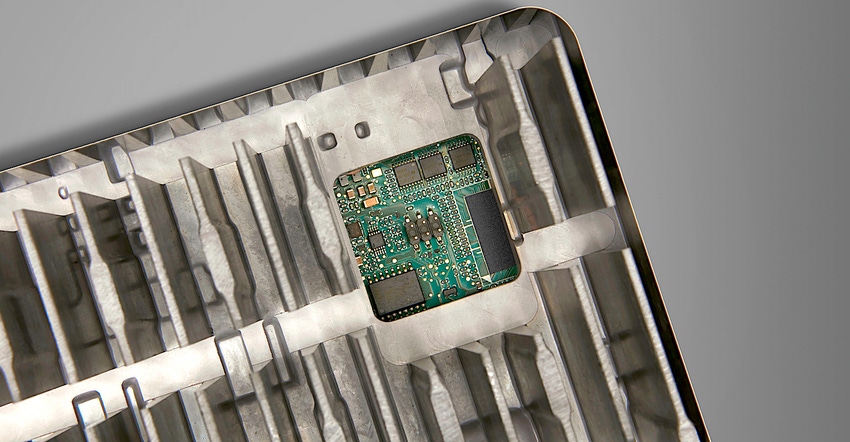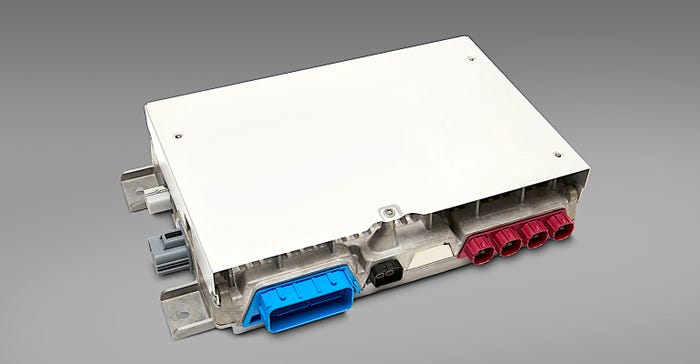Qualcomm’s Snapdragon system-on-chips provide GM’s upcoming advanced driver assistance system with speedy data processing.

GM announced at the 2022 Consumer Electronics Show in Las Vegas that it will use a scalable compute architecture featuring system-on-chips from Qualcomm Technologies, Inc. for its next-generation hands-free driver-assist system, Ultra Cruise.
General Motors is the first car company to use the Qualcomm Technologies’ Snapdragon Ride Platform for advanced driver assistance technology. This platform features a 5-nanometer Snapdragon SA8540P SoC and a SA9000P artificial intelligence accelerator.
After recent talk of automakers’ reliance on older chip fabrication technology and that contributing to the shortage of semiconductors for the industry, GM’s adoption of these leading-edge chips should insulate at least this portion of the company’s supply chain from that specific concern.
Another benefit of these leading-edge processors is that they consume little power and dissipate correspondingly little heat. This lets GM cool the compute module with air rather than relying on heavier, costlier water cooling.
Ultra Cruise hands-free driving technology will be available in 2023 on vehicles including the Cadillac Celestiq EV. The Ultra Cruise compute module is about the size of two laptops stacked together. Its high-performance sensor interfaces and memory bandwidth, in combination with GM’s homegrown Ultra Cruise software stack, aim to achieve an unmatched combination of capability, reliability, and predictability, according to the company. The target is to deliver robust door-to-door hands-free driving in 95 percent of all driving scenarios.
“Despite its relatively small size, Ultra Cruise’s compute will have the processing capability of several hundred personal computers,” said Ken Morris, GM vice president of Electric, Autonomous, and Fuel Cell Vehicle Programs. “It will take qualities that have distinguished GM’s advanced driver assist systems since 2017 to the next level with door-to-door hands-free driving.”

The Ultra Cruise compute module contains two Snapdragon SA8540P SoCs and one SA9000P AI accelerator delivering key low-latency control functions on 16-core CPUs and high-performance AI compute of more than 300 Tera Operations Per Second for camera, radar and lidar processing.
The Snapdragon SoCs are designed with 5nm process technology, enabling superior performance and power efficiency. The Snapdragon SA8540P SoCs will provide the necessary bandwidth for Ultra Cruise’s sensing, perception, planning, localization, mapping, and driver monitoring.
In addition to the Snapdragon Ride SoCs, which are designed to meet automotive system safety standards with multiple redundancies built in, the compute module includes an Infineon Aurix TC397 processor for system safety integrity. The Aurix TC397 is categorized ASIL-D – the highest Automotive Safety Integrity Level.
GM developed these Ultra Cruise capabilities in-house at its engineering facilities in Israel, the United States, Ireland, and Canada. Sensor fusion of overlaying cameras, radar, and lidar provides reliable detection and classification of data. Ultra Cruise’s software stack is also entirely developed in-house by GM.
“We are very proud of our collaboration with General Motors on one of the industry’s first uses of our Snapdragon SoCs in an automated driving system,” said Nakul Duggal, Qualcomm Technologies, Inc. senior vice president, and GM, Automotive. “Ultra Cruise powered by Snapdragon Ride on Cadillac vehicles will be an experiential and technological leap forward for the industry.”
Ultra Cruise’s compute module is upgradeable over the air thanks to Snapdragon’s high-speed interfaces, which will help keep the system modern over time.
About the Author(s)
You May Also Like





